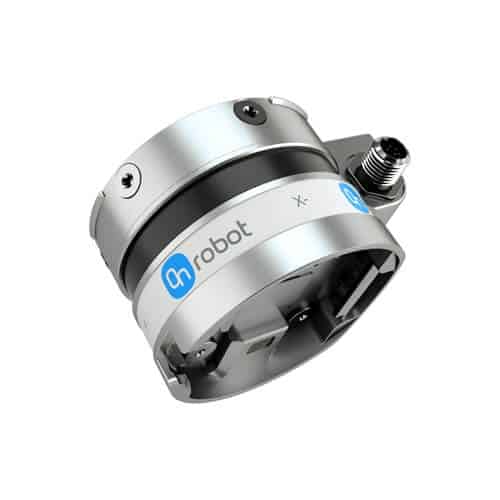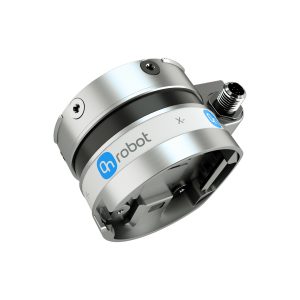The power and importance of unique sensing technologies
Sensing technologies enable force control, equipping the robot to place and fit objects precisely.

Pin insertion requires sensitive millimeter-scale work.
Pin insertion, a standard technique in precision installation, demands sensitivity and millimeter tolerances. It has resisted automation, but thanks to HEX force-torque sensor, that is now changing.

The average automobile today consists of up to 10,000 individual parts. To turn this immense number of individual components into a complete and functional vehicle requires nearly as huge a number of installation steps. Absolute precision is a fundamental essential: If just a single part isn’t sitting exactly where it belongs or gets out of alignment during installation, that threatens not only the cost-effectiveness of the manufacturer’s production processes, but in the worst case can even endanger the end customer.
Of course, this is not only true of the automobile industry but also for most high-tech products, all of which are now highly individualized, starting from huge numbers of small parts.
Efficient fine and precision installation is therefore a central factor in manufacturing them.
A good example is the pin insertion into close-fitting openings – an important standard process in the production industry. At the same time, tolerances are often relatively narrow: soft materials, deformation due to temperature fluctuations, and even minimally irregular workpieces require a high degree of adaptability during pin insertion.
If we want to automate the process, the lack of standardization therefore represents a challenge for industrial robots, which can provide a high degree of reproducibility, but may not necessarily have the required responsiveness and intelligence.
The pin insertion requires sensitive millimeter-scale work. The human hand can quickly find the right approach point simply by trying it out. A conventional robot arm designed for precisely positioned fixed waypoints cannot.
Robots by Universal Robots, KUKA, and ABB can be extended with the high-precision HEX force-torque sensor to give them a fine sense of touch. This allows them to react to their surroundings: They perceive the slightest resistance and make the corresponding course corrections in real time.
For precision installation, that’s gold. The capability of using the sense of touch expands the options for automation and allows companies to automate monotonous, repetitive work, for which human resources are hard to find.
The improved productivity and product quality at simultaneously lower costs means an added value for companies of up to 100,000 EUR per year for each robot system implemented.
The cost remains astoundingly low. Not only are the sensors powerful hardware, they also include a comprehensive software package of standard industrial applications. The “Pin Insertion” application allows inserting pins into openings to be automated in just a few steps.
Sensing technologies enable force control, equipping the robot to place and fit objects precisely.
Haptic force/torque sensors offer companies the opportunity to increase their production efficiency in many areas of application to a significant degree.
The use of haptic sensors for industrial robots immediately offers several essential competitive advantages.

Low Deformation sensor - giving the sense of touch to your robot
2,960.00€

High Precision force-torque sensor - giving the sense of touch to your robot
2,960.00€
within 7 work days
for all EU orders
discount for next purchase